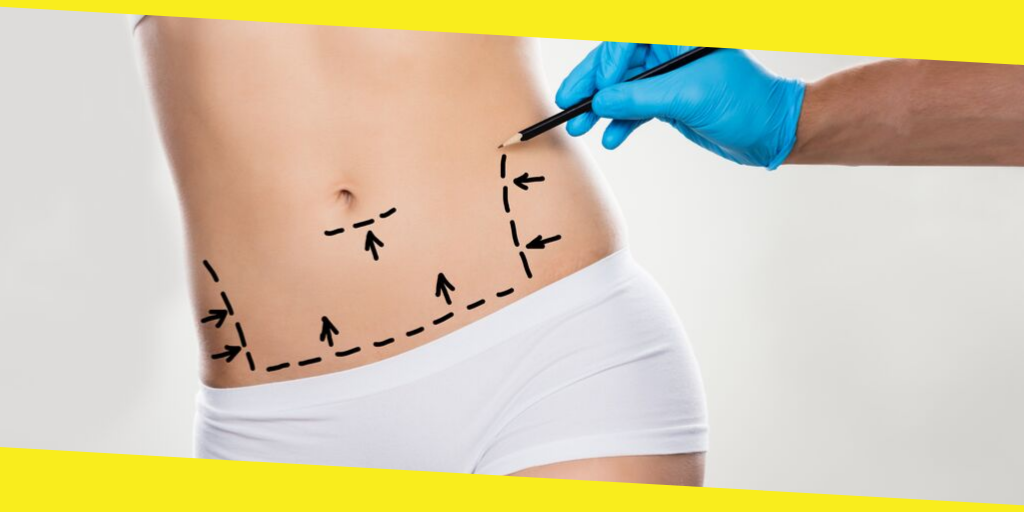5 Myths And Facts About Tummy Tuck Surgery

Cosmetic surgeries are quite common nowadays, providing different options to help people achieve their desired appearance. However, many misconceptions revolve around almost every surgical procedure.
When it comes to a tummy tuck, many of the prospective patients wind up shying away from this method because of rumors or misunderstood facts.
In order to decide whether it is the right choice for you or not, it is necessary to debunk the myths and unveil the facts. So, let’s get started-
1. Liposuction And Tummy Tuck Are Same
Many of the people think that tummy tuck and liposuction are essentially the same plastic surgery procedures. Further, there is also a common misconception that these two procedures need to be performed simultaneously.
Fact: Though both liposuction and tummy tuck help patients to achieve a slender midsection, they are designed to deal with different concerns. ‘Liposuction’ removes fat deposits from the abdomen but does nothing to address the ‘tummy pooch’ formed as a result of stretched muscles. Further, liposuction can’t correct the abdominal muscle separation that may result from obesity or pregnancy.
A tummy tuck tailors the skin, muscles, and connective tissues effectively to achieve a smooth, unique physique.
2. Tummy Tuck Is A Great Way To Lose Weight
Tummy tuck surgery helps you achieve slim, athletic-like midsection, but it is designed to remove sagging skin. However, many of the people consider this method as a substitute for diet and regular exercise program.
Fact: The truth is that this cosmetic surgery procedure is for those who have already lost a significant amount of weight to reap the best results. Moreover, plastic surgeons recommend not getting tummy tuck before losing the desired amount of weight. Or, the effects of surgery may diminish with weight fluctuations.
3. Tummy Tucks Ruins Abdominal Nerves
Many prospective patients have a wrong idea that tummy tucks will affect their abdominal nerves or affect metabolism. However, it isn’t the case.
Fact: Though the surgeon needs to serve the nerves during the surgery, there is no permanent nerve damage. It is just like other abdominoplasty procedures in which the nerves get healed automatically. However, the patient feels the numbness that may last for months.
You can talk with a plastic surgeon regarding the concerns about lasting nerve damages to put your mind at ease.
4. The Surgery Is Extremely Painful
It is natural to get a bit nervous, especially if a patient has opted to undergo more than one procedure at a time. Moreover, many assume that post-surgical pain only grows.
Fact: Fortunately, the patients get surprised at how little pain they experienced. But, recovering from any surgery requires plenty of relaxation, rest, and post-operative care. So, it is recommended to take proper doses and follow the surgeon’s advice to manage the discomfort.
5. Incisions May Leave Behind Big Scars
Another common misconception surrounding tummy tuck is that it leaves behind huge scars. It might be true with any major abdominal surgery, but tummy tuck doesn’t leave big, noticeable scars at all!
Fact: Tummy tuck requires an incision that is made across the abdomen, from one hip bone to the other. But, the surgeon uses small incisions placed within the natural creases of skin to make necessary changes to muscles and fat cells.
Most of the incisions are performed in a bib-shaped pattern that can be easily hidden with clothing. Further, there are laser resurfacing treatments that encourage the scars to become lighter more quickly.
Conclusion
Though every patient is unique, with an array of surgical procedures available, anyone can achieve the desired figure. We hope that after knowing about the truth behind tummy tucks, you will be able to take the next step towards the surgery.
You may like this
Recommended For You
Developing Your Own Health and Lifestyle Brand: Tips on Getting Started
Most Inside
Most Inside offers high-quality recommendations and valuable updates to enhance all aspects of your life, providing premium guidance and enriching experiences.




